Air Canada offers a number of fare options for travellers. Some fares are cheaper, but don’t include many benefits, while others are more expensive, but offers greater flexibility and perks.
This year, some fare categories have undergone changes, making it a good time to revisit and understand the available options.
In this article, we’ll explore the different fare options for flights with Air Canada, with a focus on shopping for fares with Aeroplan Elite Status in mind. While most of the discussion will be on cash fares, we’ll also go over some considerations to keep in mind when booking with Aeroplan points.
In This Post
Air Canada’s Fares
When shopping for flights on Air Canada’s website, you’ll notice that there are a number of different options at your disposal for tickets. You’ll pay a different price for a flight depending on which fare you choose.
For example, let’s say that you’re looking to fly from Halifax to Vancouver, and you pull up a search result. Initially, you see two different prices for a direct flight: one for economy, and one for business class.

When you click on the economy fare, you’ll notice a number of different options, with the lowest priced at $283 (CAD) and then incrementally higher prices with each different fare.

Under the “Features” column, you’ll see a list of various factors that you’ll want to consider when shopping for a fare. This includes aspects such as refundability, included baggage, accumulation of Aeroplan points, and earning Status Qualifying Miles (SQM) towards Aeroplan Elite Status.
If you’re not a frequent flyer, shopping for the right fare isn’t necessarily a straightforward process. Indeed, you’ll want to consider any or all of the following when looking for a fare:
- Credit card benefits
- Aeroplan Elite Status benefits
- Aeroplan Elite Status qualification
- Number of eUpgrades required
- Amount of eUpgrade add-on fee (if any)
- eUpgrade waitlist ranking considerations
- Fare flexibility
As we’ll show below, the cheapest fare isn’t always necessarily the best deal, but there’s also no point in paying more than you absolutely have to.
For the purposes of this article, we won’t be focusing on the different fare classes within each fare. Rather, we’ll describe each different fare type, and then weigh the pros and cons of choosing to book each one.
Economy (Basic)
Economy (Basic) fares are the least expensive, but most restrictive, fares that Air Canada offers. You can find Economy (Basic) fares on domestic, transborder, and international routes, as well as to Sun destinations.
As the name suggests, Economy (Basic) fares come with no bells and whistles—really, you get a randomly assigned seat, no carry-on allowance, and that’s about it.
Economy (Basic) fares are non-refundable, and if you choose to cancel, you can’t retain the value for a future travel credit. Similarly, you can’t make changes to your booking (even for a fee), and you aren’t eligible for same-day standby.
On domestic routes, you’ll only earn 10% Aeroplan points, and on all other routes, you’ll earn 25% Aeroplan points. This means that if your flight is 1,000 miles, you’d only earn 100 Aeroplan points on a domestic flight, or 250 Aeroplan points on all other flights.
With Economy (Basic) fares, you won’t earn any Status Qualifying Miles (SQM), Status Qualifying Segments (SQS), or Status Qualifying Dollars (SQD) towards Aeroplan Elite Status.
eUpgrades cannot be applied to Economy (Basic) fares, so if you’re looking to travel in a higher class of service by using eUpgrade credits, you’ll want to pay for a higher fare.
With these fares, checked luggage and carry-on bags come with additional fees, and starting January 21, 2025, seat assignments will be random, and changing your seat will incur a fee if the assigned one isn’t to your liking.
You also won’t enjoy any included ground perks, such as priority check-in or Maple Leaf Lounge access, unless you already enjoy those through a credit card or with your status.
Who should book Economy (Basic) fares?
Despite being the most restrictive fare, Economy (Basic) fares exist for a reason.
This fare is prefect for travellers who packs light, don’t care about earning Aeroplan points or Elite Status, and just want to get from Point A to Point B for the lowest possible cost. If you’re also prepared to risk the bad luck of being assigned a middle seat next to the toilet at check-in, Economy (Basic) fare might just hit the spot.
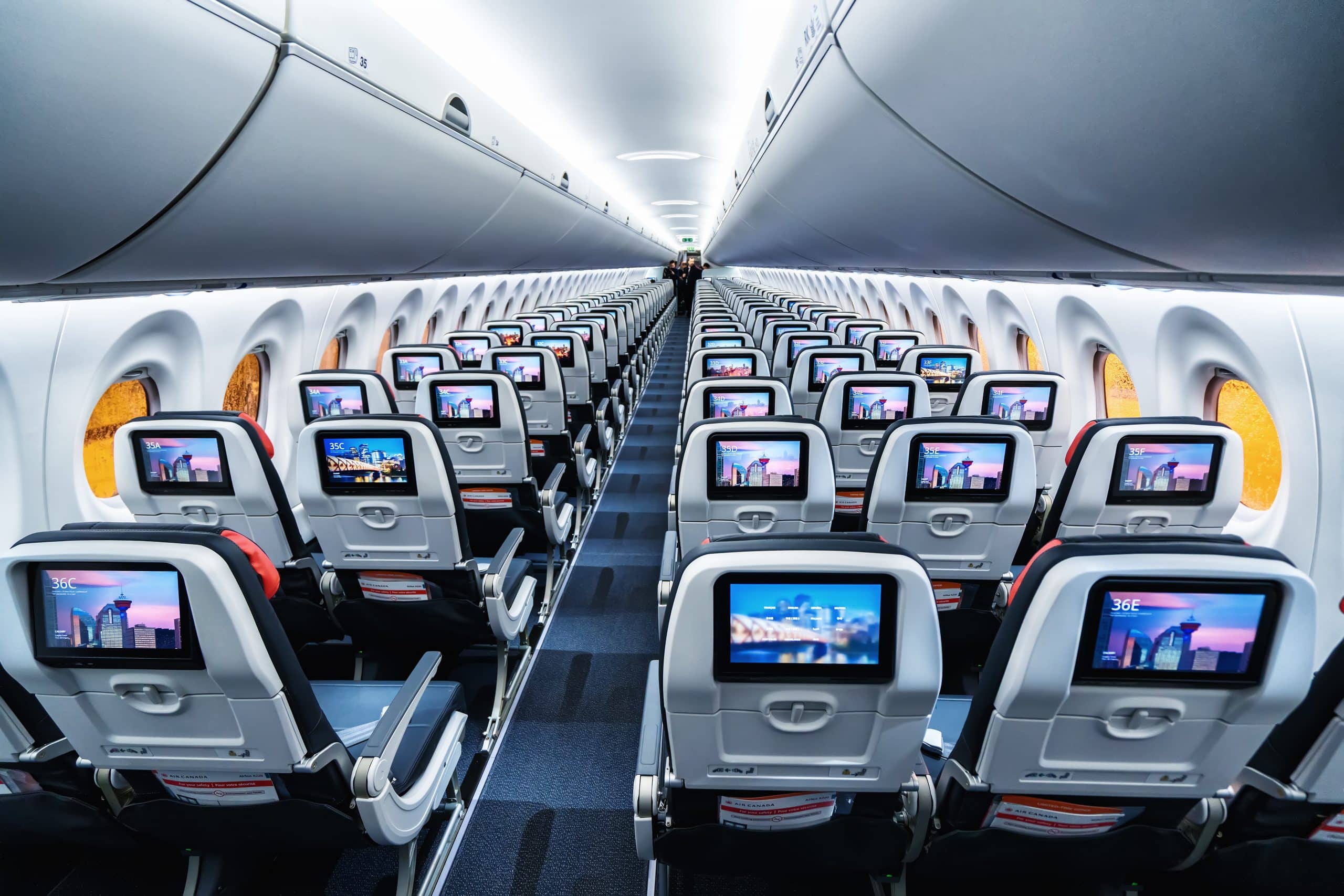
At the same time, if you already enjoy other perks that are included with your status or credit card, such as lounge access, seat selection, priority boarding, and free checked luggage, then Economy (Basic) fares could be right for you, too. Why pay more for a flight if you already enjoy the perks that come with higher fares?
For example, if you have a credit card such as the TD Aeroplan® Visa Infinite* Card, you and up to eight passengers on the same booking get one free checked bag on Air Canada flights.
If you’re a family of four looking for the cheapest flights, then you could book an Economy (Basic) fare and save on checked baggage fees with an eligible co-branded credit card. At a minimum of $35 (CAD) per checked bag without a credit card, the savings can certainly add up quickly.
On the other hand, if you’re in pursuit of Aeroplan Elite Status, then it’s probably advisable to look for a different fare with a higher accumulation rate. Since you won’t accumulate any SQM, SQS, or SQD, Economy (Basic) fares likely aren’t for you if you hope to qualify for or maintain Aeroplan Elite Status.
Likewise, if you want some peace of mind if your plans change, then you should consider a higher fare that allows you to change or cancel your booking, usually for a fee. For what it’s worth, Air Canada’s Cancel for Any Reason feature isn’t available on Economy (Basic) fares.
Economy (Standard)
The next level up from Economy (Basic) is Economy (Standard). This fare bracket is available to all destinations, including domestic, transborder, international, and Sun Destinations.
Economy (Standard) is also the lowest redemption fare bracket for Aeroplan points redemptions, making it a popular choice for travellers looking to maximize value with points.
Economy (Standard) come with a few more inclusions—you’ll at least have a carry-on bag included—but they’re still more restricted compared to higher fare classes.
You also have the option to select from standard seats once the check-in window opens—perfect for those with quick fingers.
Economy (Standard) fares aren’t refundable, but you can make changes for a fee that varies depending on your destination. On select domestic and transborder routes, Economy (Standard) fares are eligible for same-day standby.
On domestic routes, you’ll earn 25% Aeroplan points, while on all other routes, you’ll earn 50% Aeroplan points. For example, if your flight is 1,000 miles long, you’d earn 250 Aeroplan points if it’s a domestic flight, and 500 Aeroplan points if it’s to any other destination.
Economy (Standard) fares earn 50% SQM on all routes, which means that you’d earn 500 SQM on a flight that’s 1,000 miles long. Economy (Standard) fares are eligible for full SQS and SQD accumulation, and you can apply eUpgrades to your booking, albeit typically with an add-on fee.
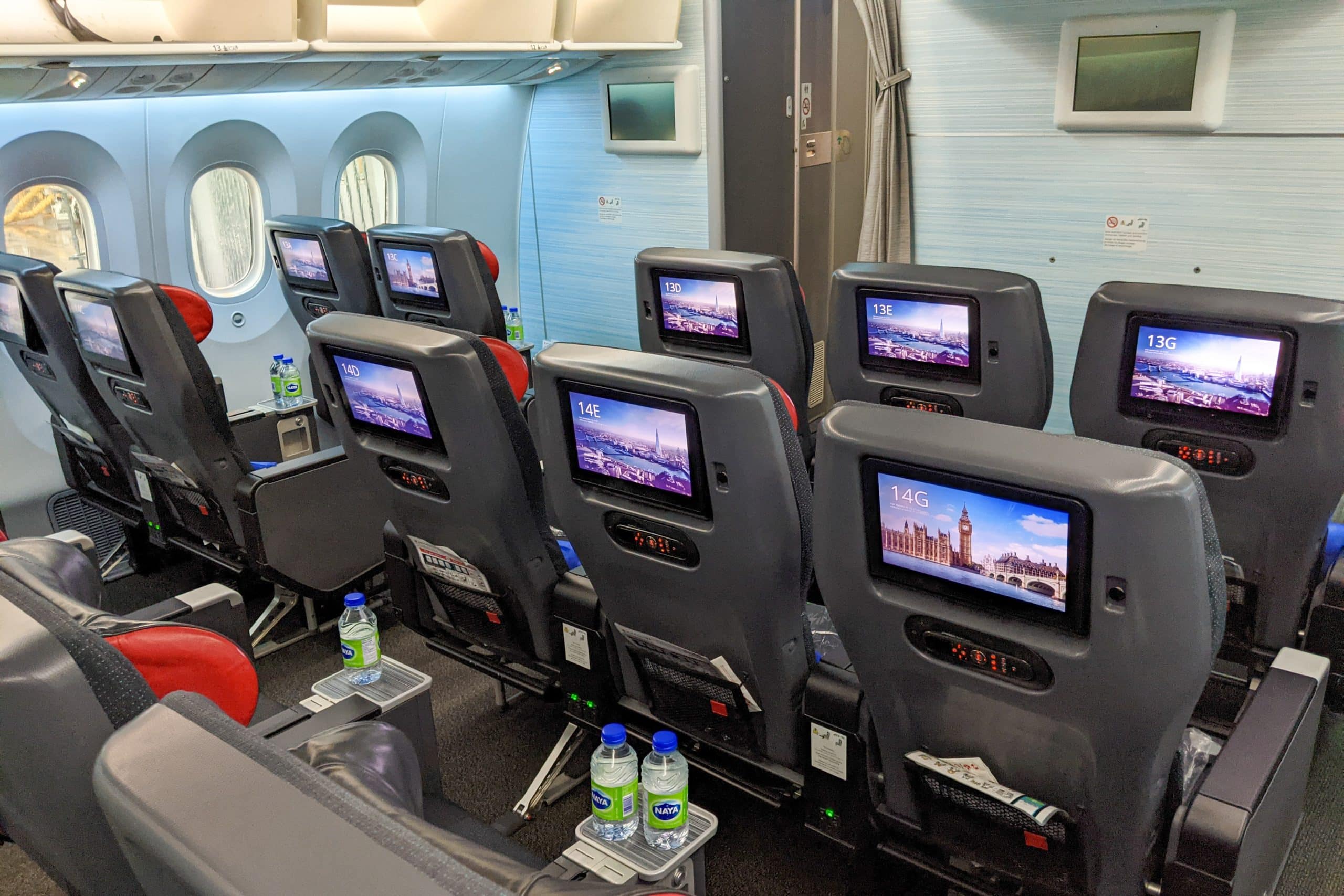
In summary, Economy (Standard) fares offer a slightly improved travel experience, with the inclusion of a carry-on bag and the ability to select a seat during check-in.
Who should book Economy (Standard) fares?
The main reasons to opt for an Economy (Standard) fare over an Economy (Basic) fare are:
- You need to bring at least a carry-on and you don’t have other ways to offset baggage fees.
- You care about accumulating SQM and slightly more Aeroplan points
- You want to be eligible for SQS and SQD accumulation on all routes
- Youn want to apply eUpgrades to your booking (typically with an add-on fee)
- You value the ability to make changes to your booking, even if it comes with a fee.
For travellers without status, Economy (Standard) fares offer a bit more flexibility than Economy (Basic) fares, but not nearly as much as any of the higher fares. If you’re happy to always fly in economy, and a carry-on meets your travel needs most of the time, then Economy (Standard) fares can often be a practical and worthwhile choice.
Economy (Standard) fares can be a good idea for someone who tends to qualify for Aeroplan Elite Status through SQS and not SQM. Since you earn 100% of the segments flown, but only up to 50% of the miles flown, you could wind up saving money over the course of the year by booking a lower fare.
Of course, you should also take into consideration the Aeroplan points you’d earn with a higher fare, which could become meaningful if you’re a very frequent flyer.
While you can apply eUpgrades to Economy (Standard) bookings, they almost always come with an add-on fee. If you plan on using them to upgrade to a higher class of service, you’ll want to look at the difference between the total cost of the Economy (Standard) fare plus the add-on fee and a higher fare, which would either come with a lesser add-on fee or none at all.
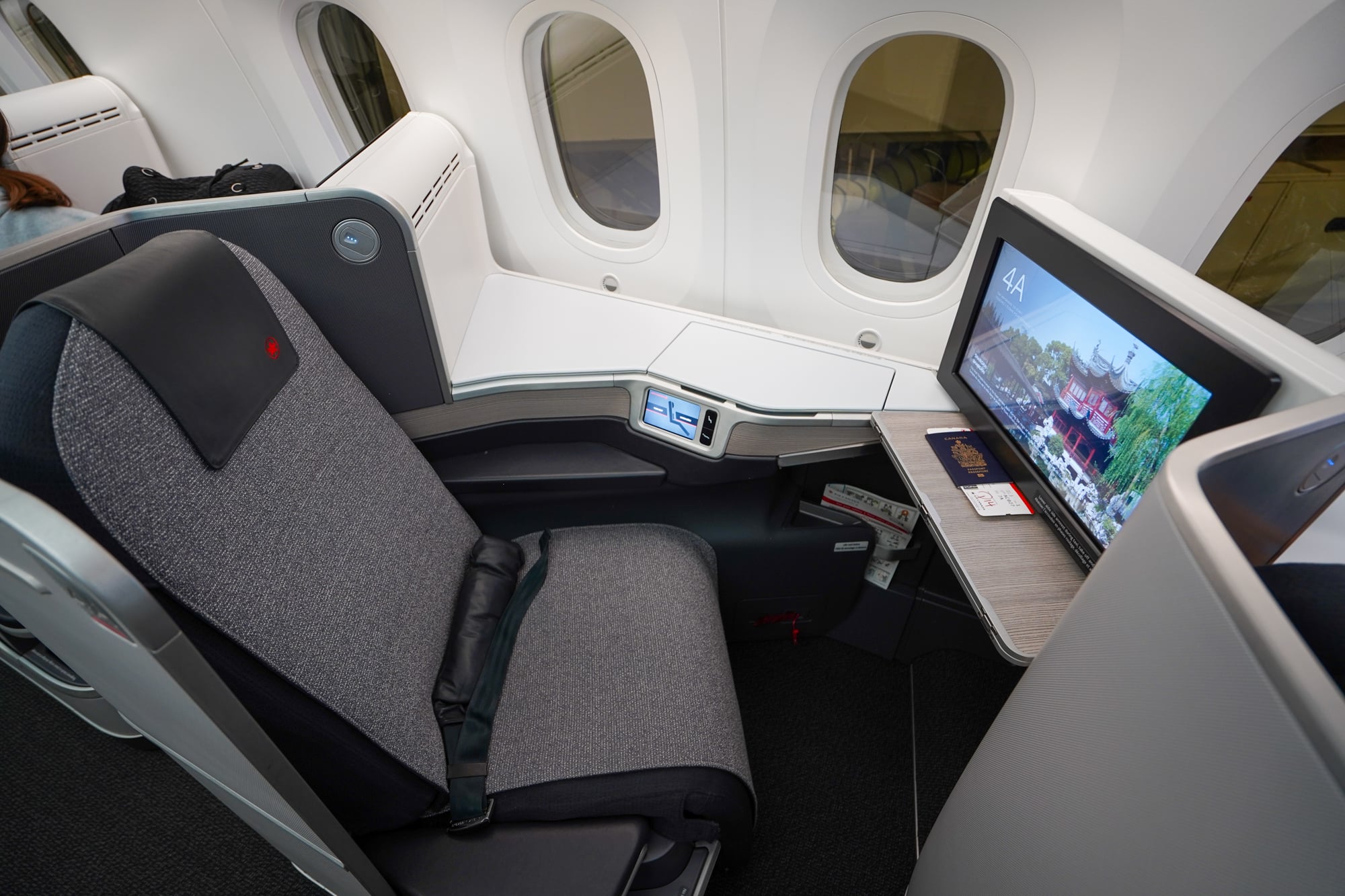
If you tend to make changes to bookings, then you should likely consider a higher fare to avoid paying change fees in addition to the fare difference (if any).
Should you have free checked baggage, Maple Leaf Lounge access, priority airport services, free seat selection, or any other perks through status or credit card benefits, then Economy (Standard) fares are a decent option, especially if you’re happy with flying in economy.
When it comes to Aeroplan redemptions, Economy (Standard) fares have the lowest cost in points. If you’re travelling in economy and have any tier of Aeroplan Elite Status, then booking Economy (Standard) is almost always the best bet, as long as you won’t be applying eUpgrades to your booking.
Economy (Flex)
The next fare brand up from Economy (Standard) is Economy (Flex). Economy (Flex) fares are available across all of Air Canada’s markets, including on Aeroplan redemptions.
Economy (Flex) fares are where we begin to see more meaningful benefits that come with the higher price.
Economy (Flex) fares aren’t refundable, but can be changed. Aside from bookings to international destinations, with which you’ll be charged a change fee, you’ll just need to pay the difference in fare (if any) with Economy (Flex) fares.
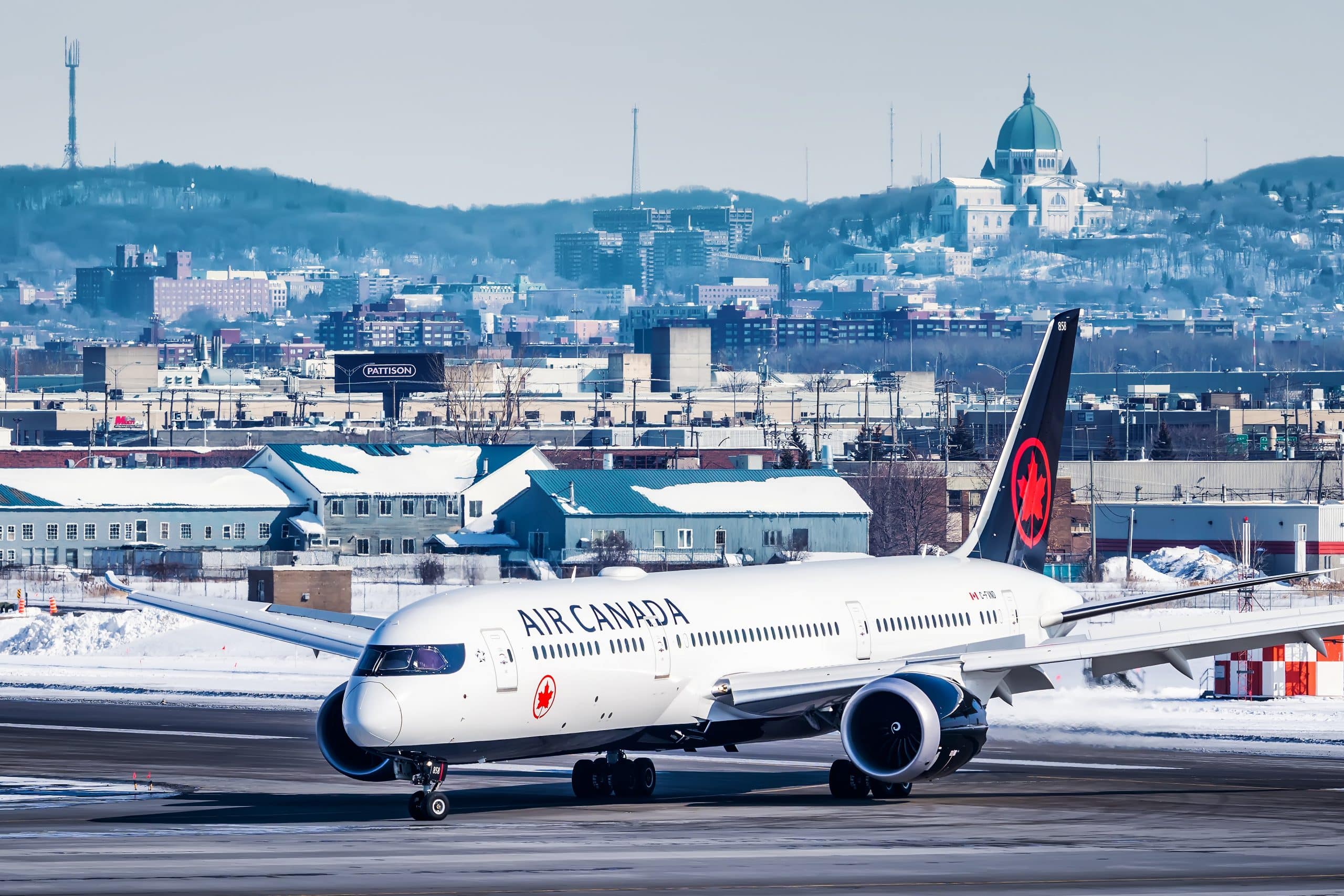
On Aeroplan points bookings, Economy (Flex) fares can be changed for free (a fare difference in points may apply), but are subject to cancellation fees.
Same-day airport standby is available on select routes within Canada and to the United States, and same-day airport changes are available for a fee on select routes.
You’ll earn 100% SQM and 100% Aeroplan points for the distance flown on Economy (Flex) fares, as well as full SQS and SQD. This means that on a flight that measures 1,000 miles, you’d earn 1,000 SQM towards status, 1,000 Aeroplan points, plus full SQS and SQD on your booking.
Economy (Flex) fares include one free bag, advance seat selection, and Maple Leaf Lounge access for $79 (CAD).
Who should book Economy (Flex) fares?
The main reasons to pay more for an Economy (Flex) fare over an Economy (Standard) fare are:
- Saving on change fees
- Accumulating 100% SQM and 100% Aeroplan points
- Having fewer eUpgrades required
- Having a lower add-on fee for eUpgrades (if any)
Economy (Flex) fares are useful for making the most of paid fares through SQM and Aeroplan accumulation, as well as for saving on change fees in most markets.
If there’s a chance that you’ll need to change your flights, then Economy (Flex) fares are certainly worth considering for peace of mind. This also holds true for Aeroplan redemptions, as you’d only need to pay the difference in points, if any.
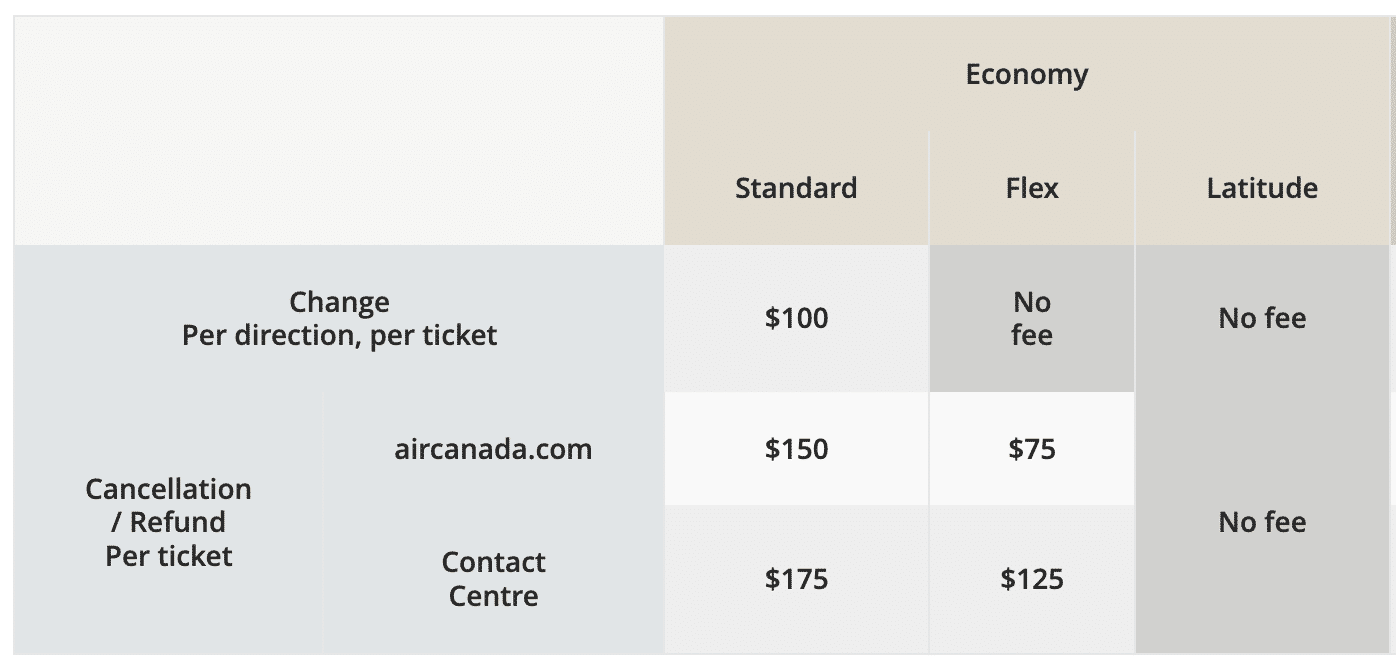
Plus, if you tend to qualify for Aeroplan Elite Status through SQM, then you’ll generally want to book Economy (Flex) cash fares at a minimum, since you’ll earn 100% SQM on the miles flown.
On flights within North America and to Sun destinations, all Economy (Flex) fares come without an add-on fee for eUpgrade usage. For international flights, you’ll have to pay an add-on fee, except for if you’re a Super Elite, book a “B” or “M” fare, or only upgrade to premium economy.
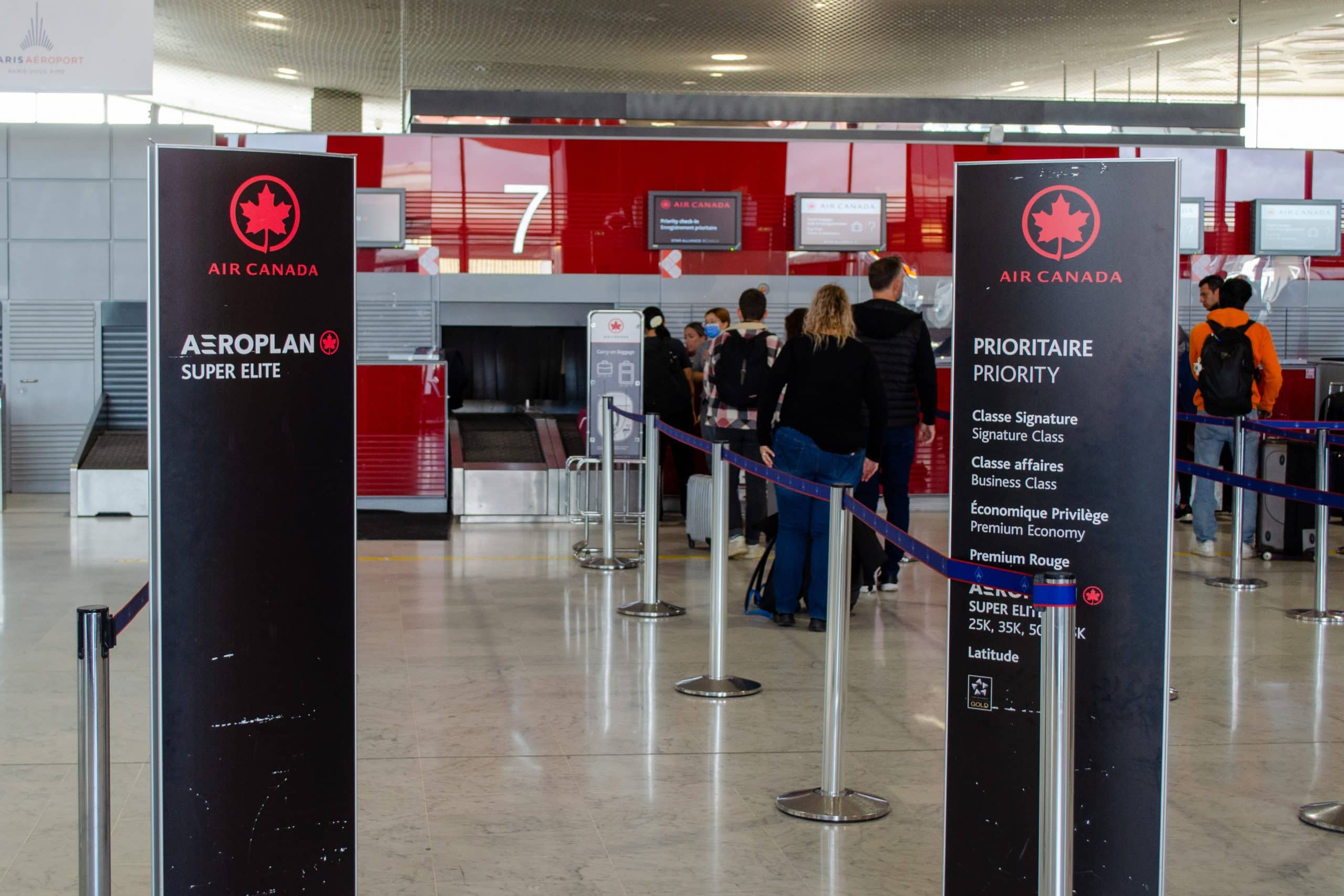
It’s important to note that many of the fare inclusions for Economy (Flex) also come as co-branded credit card benefits and with Aeroplan Elite Status. If you already enjoy free checked baggage or seat selection, and if you don’t plan on using eUpgrades, then the buy-up to Economy (Flex) may not always be worth the extra price.
This is particularly the case with Aeroplan redemptions, with which it’s not always worth the extra points to move from Economy (Standard) to Economy (Flex). If you plan on using eUpgrades, just be sure to weigh the cost of the add-on fee against the number of extra points required to see if it’s worthwhile.
Economy (Comfort)
Economy (Comfort) fares are the next step up from Economy (Flex). You can find Economy (Comfort) fares available on domestic, transborder, and routes to Sun destinations, but not on international routes or any Aeroplan booking.
The primary difference between an Economy (Comfort) and an Economy (Flex) fare is that the Economy (Comfort) fares are fully refundable at no cost. If you don’t want to risk losing cash if your plans change and you no longer need to fly, then it’s worth considering Economy (Comfort) over Economy (Flex).
You’ll also benefit from greater flexibility, in that you can make changes in advance, as well as request a same-day airport change or same-day airport standby at no additional cost. For same-day airport changes, you won’t incur any additional fees with Economy (Comfort) fares, as long as the flight is operated by Air Canada.
You’ll earn 115% Aeroplan points and SQM on Economy (Comfort) fares, in addition to the usual SQS and SQD accumulation.
The price of Maple Leaf Lounge access drops to $59 (CAD) per visit on Economy (Comfort) fares, and you’ll receive free Preferred Seat selection on all bookings.
You’re also entitled to two complimentary checked bags.
Who should book Economy (Comfort) fares?
The main reasons to book an Economy (Comfort) fare over an Economy (Flex) fare are:
- Being able to refund your flight at no cost
- Using fewer eUpgrades on bookings
- Higher eUpgrade waitlist ranking
- Slightly higher SQM and Aeroplan accumulation
If you’re concerned that you might need to cancel your trip, it’s worth considering Economy (Comfort) fares, since they’re fully refundable at no extra cost. You’ll have to shoulder a higher fare to begin with, but that’s the price to pay for the added flexibility.
You’ll also be able to ration your eUpgrades with Economy (Comfort) fares, since you’ll typically expend fewer than with Economy (Flex) and Economy (Standard) fares. Should you be waitlisted for an eUpgrade, you’ll rank higher than anyone booked on a lower economy fare, which could mean the difference between a lie-flat seat and being stuck in the back.
The add-on fees for most Economy (Comfort) fares cap out at $200 (CAD), which is modest when compared to the $500–750+ (CAD) fees with the lower fares.
The extra 15% SQM and Aeroplan-point accumulation could also be meaningful, especially if there are any promotions that you can stack with them. If you’re just shy of an SQM threshold to get to the next status level, that extra 15% may bring you closer to the finish line.
Economy (Latitude)
The least restrictive, and therefore most expensive, of Air Canada’s economy fares is Economy (Latitude). Economy (Latitude) fares are available to all Air Canada markets, including with Aeroplan bookings.
Economy (Latitude) fares feature many of the same benefits of Economy (Comfort) fares, just taken to the next level.
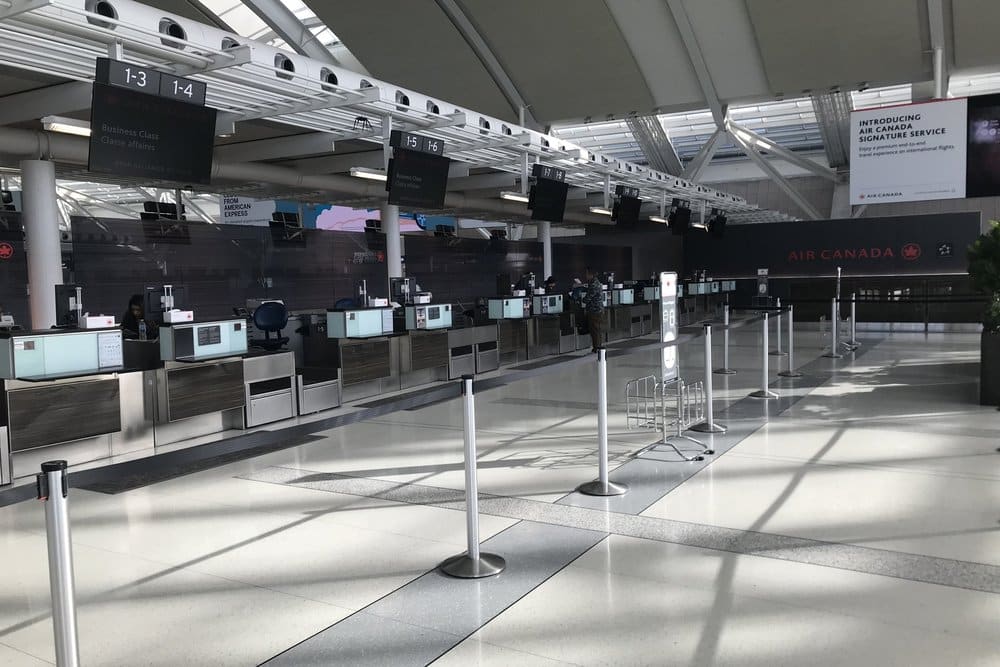
Economy (Latitude) fares are fully refundable and may be changed in advance without a fee. You can use the same-day airport change and same-day standby benefits, too.
You’ll earn 125% SQM and Aeroplan points, as well as the usual SQS and SQD accumulation.
With Economy (Latitude) fares, you’ll enjoy priority check-in and baggage handling (even if you don’t have status), $49 (CAD) access to Maple Leaf Lounges, two free checked bags, no fee for handling sports equipment, and a free Air Canada Bistro meal on domestic, transborder, and Sun routes.
Who should book Economy (Latitude) fares?
The main reasons to book Economy (Latitude) over Economy (Comfort) are:
- Fully refundable fares for international flights
- Using the fewest number of eUpgrades on bookings
- No add-on fees for eUpgrades
- Not being subject to the eUpgrade clearance window
- Slightly higher SQM and Aeroplan accumulation
It’s worth noting that Economy (Latitude) fares can be significantly more expensive than all other economy fares, and in some cases, the cost even rivals business class fares.
Aside from being fully refundable, the main reason to buy an Economy (Latitude) fare has to do with eUpgrade usage. You’ll expend the fewest eUpgrades on bookings, and you won’t encounter an add-on fee on any routes, but the most important reason is what we’ve coined as the “Latitude Attitude“.
All other economy fares are subject to an eUpgrade clearance window, which means that you can only instantly confirm a space-available eUpgrade within a certain timeframe prior to departure.
On the other hand, Economy (Latitude) fares aren’t subject to a clearance window at all, which means that as long as you tick all of the boxes (by checking for eUpgrade availability and having eUpgrades available in your account valid for the date of travel), you can instantly confirm a seat in business class immediately after booking, having paid for economy.
While this remains one of the most valuable ways to redeem Aeroplan points for Air Canada business class, it can also come in handy for cash bookings when you’d otherwise pay for a business class seat.
For example, consider the cost of a flight from Toronto to London. In this instance, an Economy (Latitude) fare costs $1,868 (CAD) and a Business Class (Lowest) fare costs $2,594 (CAD).

If you have the 11 eUpgrades valid for the date of travel, and if you’ve confirmed that there is eUpgrade space available on the flight, then you’ve just saved yourself over $700 (CAD) for the same seat on the same flight.
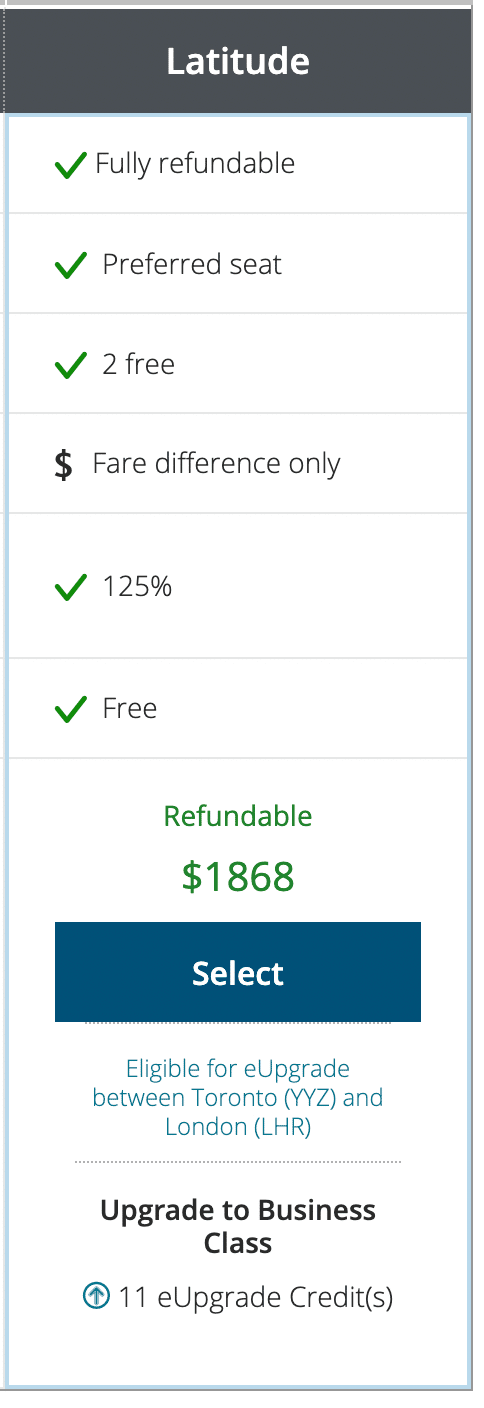
There are many other examples in which a similar approach could work, and if you’re going to pay for business class anyway, then it’s worth looking at Economy (Latitude) fares as well.
Just keep in mind that there’s a small chance that you’ll lose your eUpgrade. If you want to be guaranteed a seat in business class, book business class to begin with.
Premium Economy (Lowest & Flexible)
Let’s quickly look at Premium Economy (Lowest & Flexible) fares. While there are plenty of reasons why premium economy is a great deal, it’s worthwhile adding it to the discussion of fare shopping.
The most obvious reason to book in premium economy is that you’ll enjoy an overall better experience to begin with. You’ll get a seat with much more room than economy, a better meal, complimentary drinks, and priority ground services.
Premium Economy (Lowest) fares can, in some cases, be less expensive than Economy (Flex) fares, which is something to always consider when you’re shopping for flights with cash and with Aeroplan points.
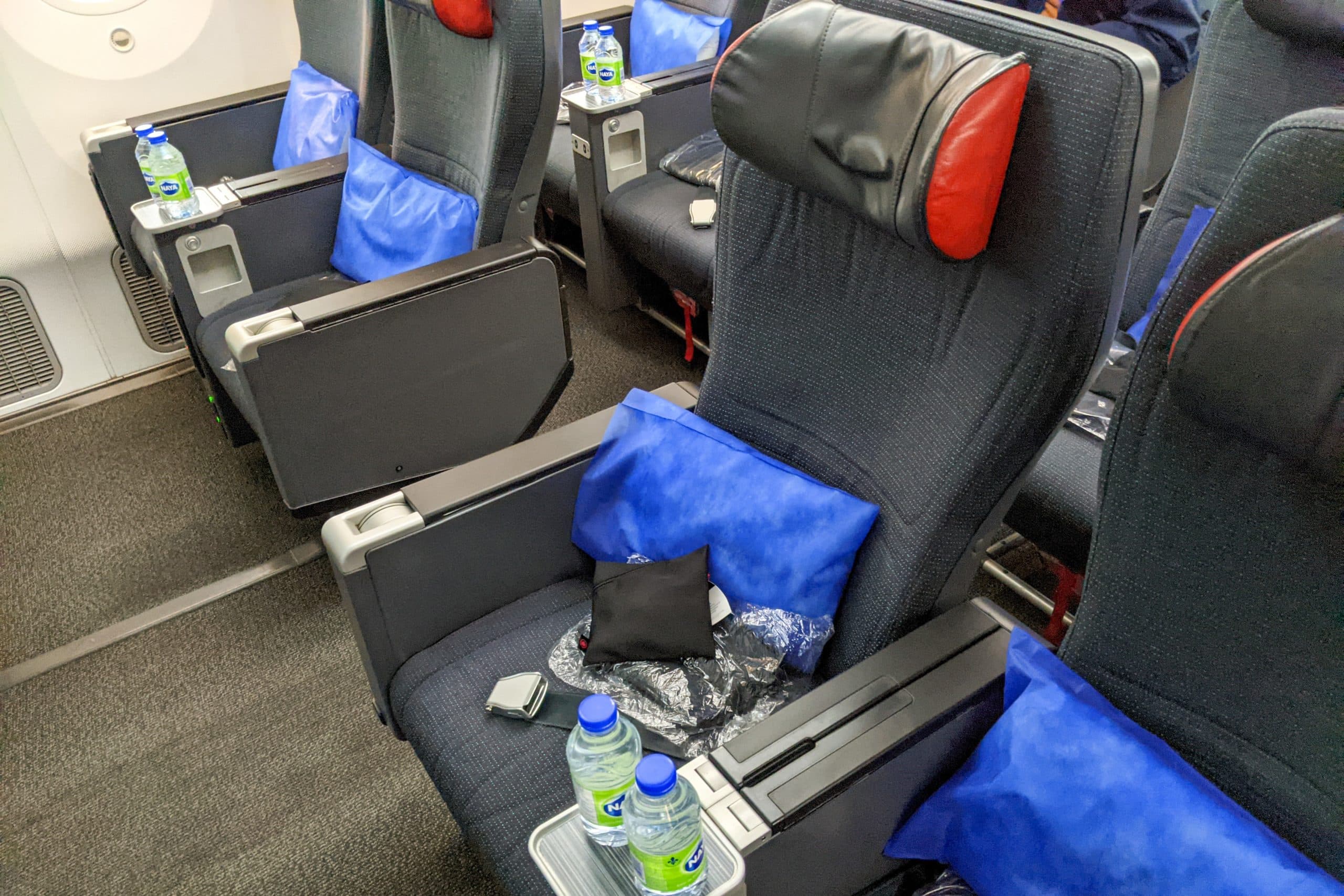
You’ll be at the top of the eUpgrade waitlist with a premium economy fare, which means that you’ll be ahead of everyone else who books an economy fare to begin with.
In this sense, you have the best chances of securing an eUpgrade to Air Canada business class if you’ve booked in premium economy; however, you should also be ready to fly in premium economy if the upgrade doesn’t clear.
In many ways, Premium Economy (Lowest) and Economy (Flex) fares are similar, but you’ll earn 125% SQM and Aeroplan points with Premium Economy fares, and you’ll also enjoy a few more inclusions. eUpgrade add-on fees for Premium Economy (Lowest) fares are much lower than those of economy fares, too.
Premium Economy (Flexible) fares are similar to Economy (Latitude) fares in that they’re refundable and aren’t subject to an eUpgrade clearance window. If, for some reason, it costs less in cash or points to book Premium Economy (Flexible) over Economy (Latitude), then be sure to choose your fare accordingly.
Business Class (Lowest & Flexible)
Let’s end with a quick word about Business Class (Lowest & Flexible fares). These are almost certainly the most expensive of all of Air Canada’s fares, and come with supercharged 150% SQM and Aeroplan earning rate.
Of course, if you want a 100% chance of flying in business class, then you need to book in business class to begin with.
The primary difference between the two fares is that the Business Class (Flexible) fare is fully refundable at no cost.
Both fares offer two free checked bags, priority ground services, access to the London Heathrow Arrivals Lounge, and Air Canada’s best in-flight experience.
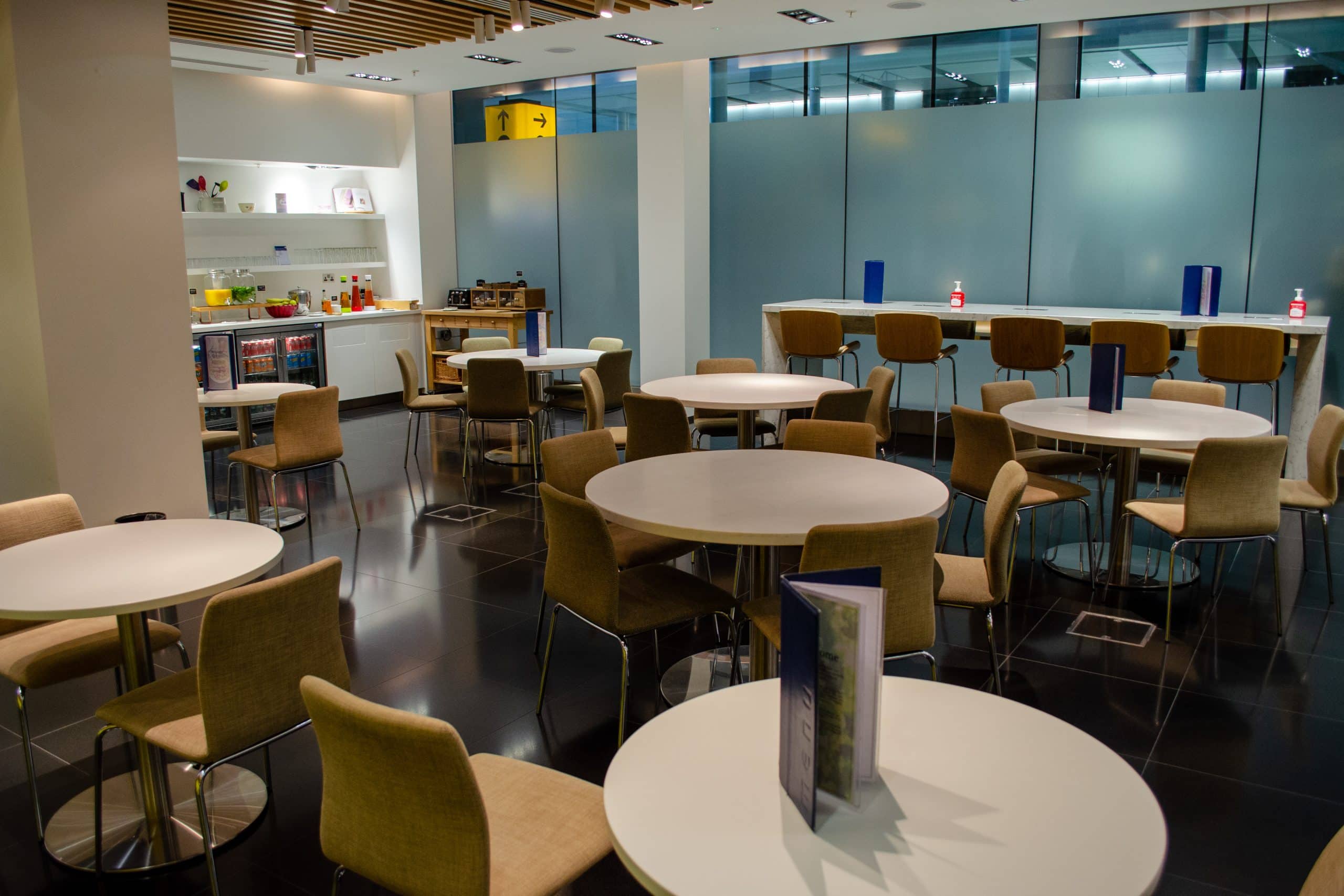
The only other consideration to note is that not all business class cabins are created equally.
For example, consider if it’s worth paying for a North American-style business class seat, which is largely the same as a premium economy seat, or if there are cheaper ways to score a seat in Air Canada business class.
With some finesse, you should be able to find yourself in a lie-flat pod without having paid the premium for it, assuming you have Aeroplan Elite Status.
Conclusion
Air Canada offers a range of fares to customers across all of its markets. Lower fares come with fewer inclusions, while higher fares offer greater flexibility and more perks.
When shopping around for flights, it’s important to consider all options, including benefits that you could otherwise enjoy through an Aeroplan co-branded credit card or with your Aeroplan Elite Status. You’ll also want to consider if the fare you’re looking at is really the best deal, given your goals, travel patterns, and desired comforts.
If you’re unsure, consider reaching out to a qualified travel agent or joining the Prince of Travel community to connect with fellow travel enthusiasts for advice and insights.






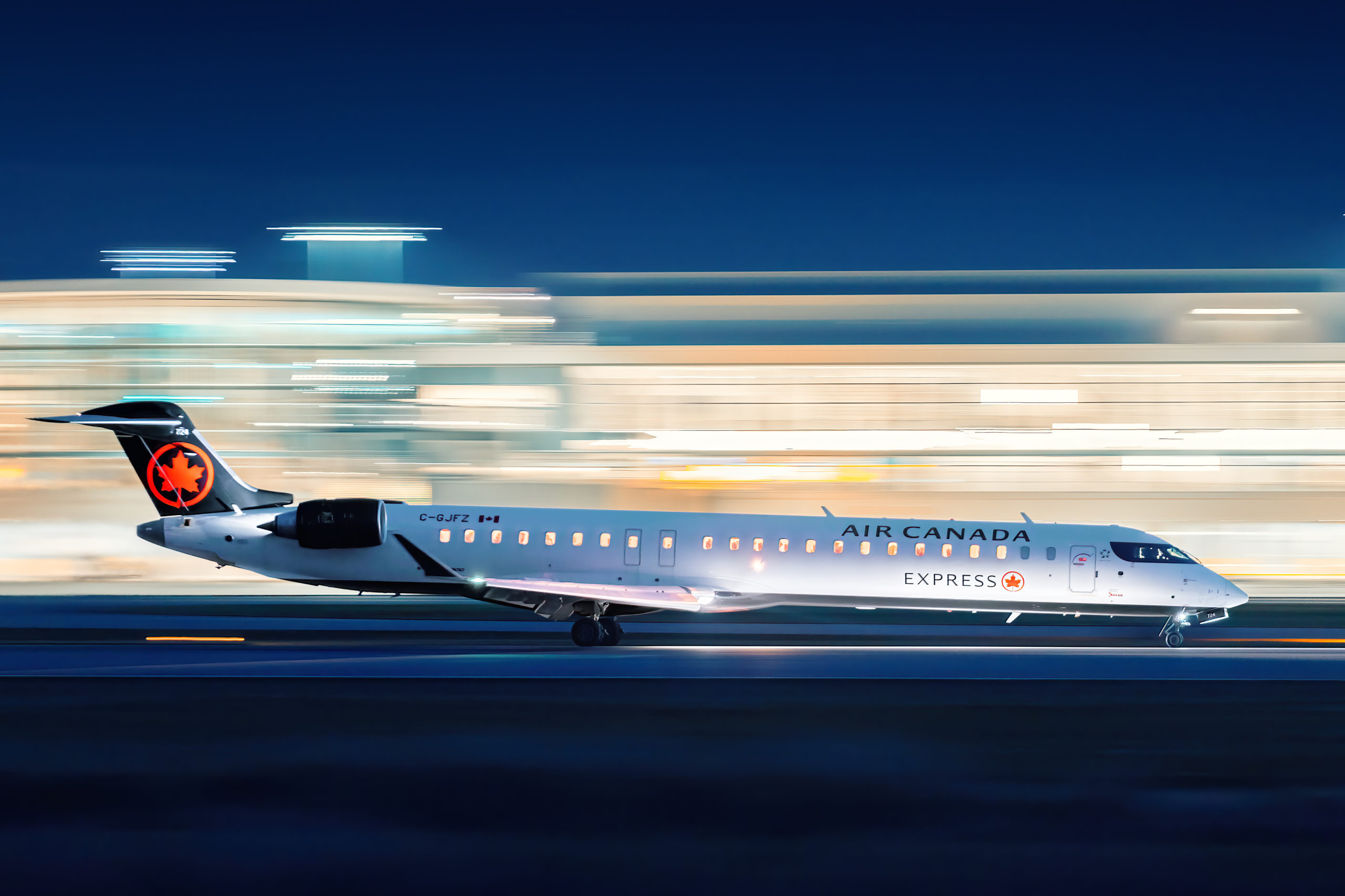
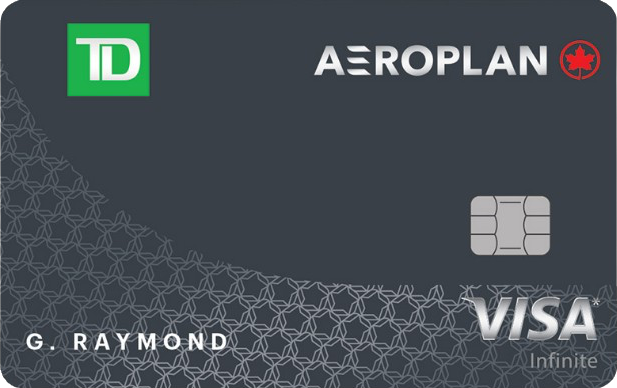

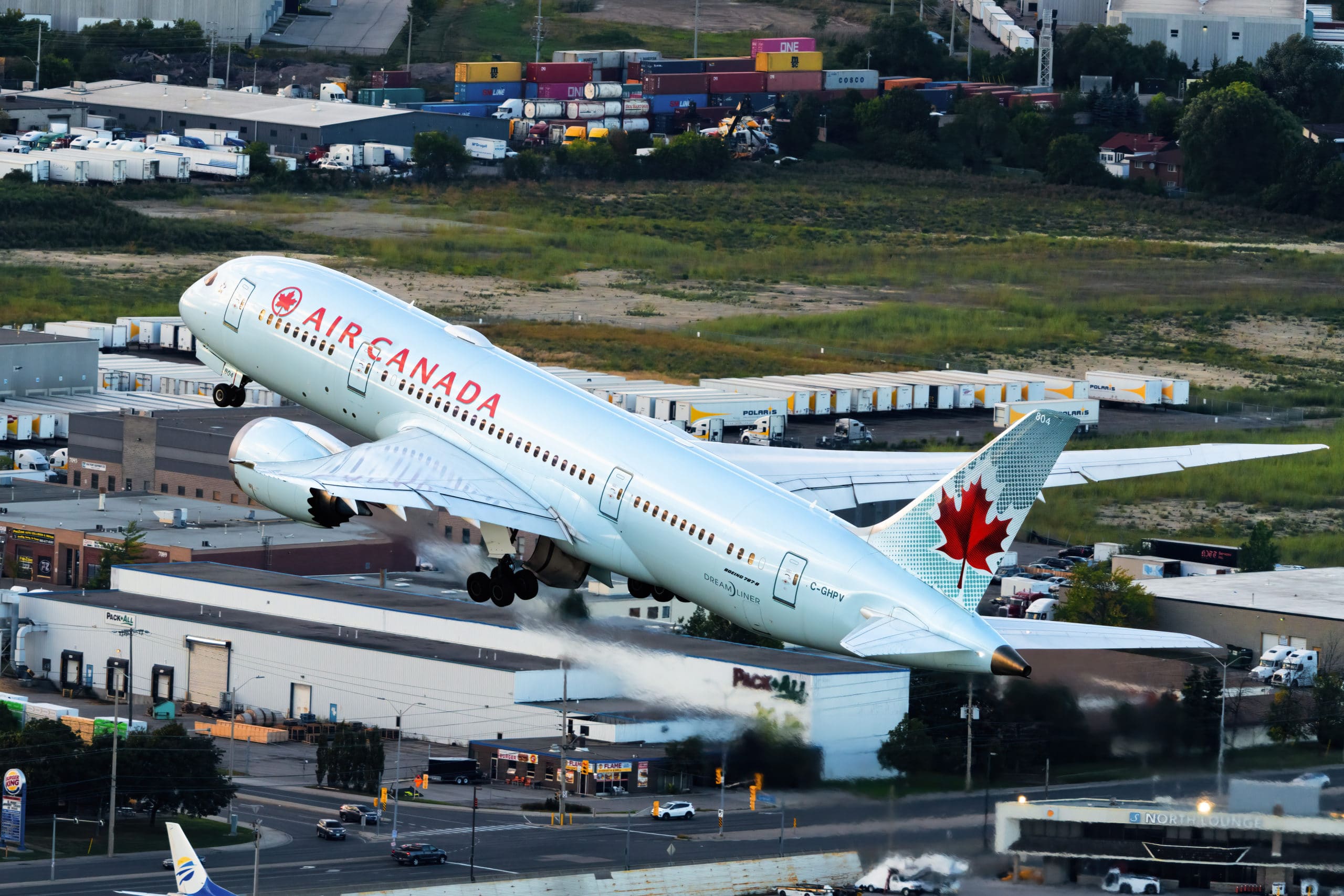
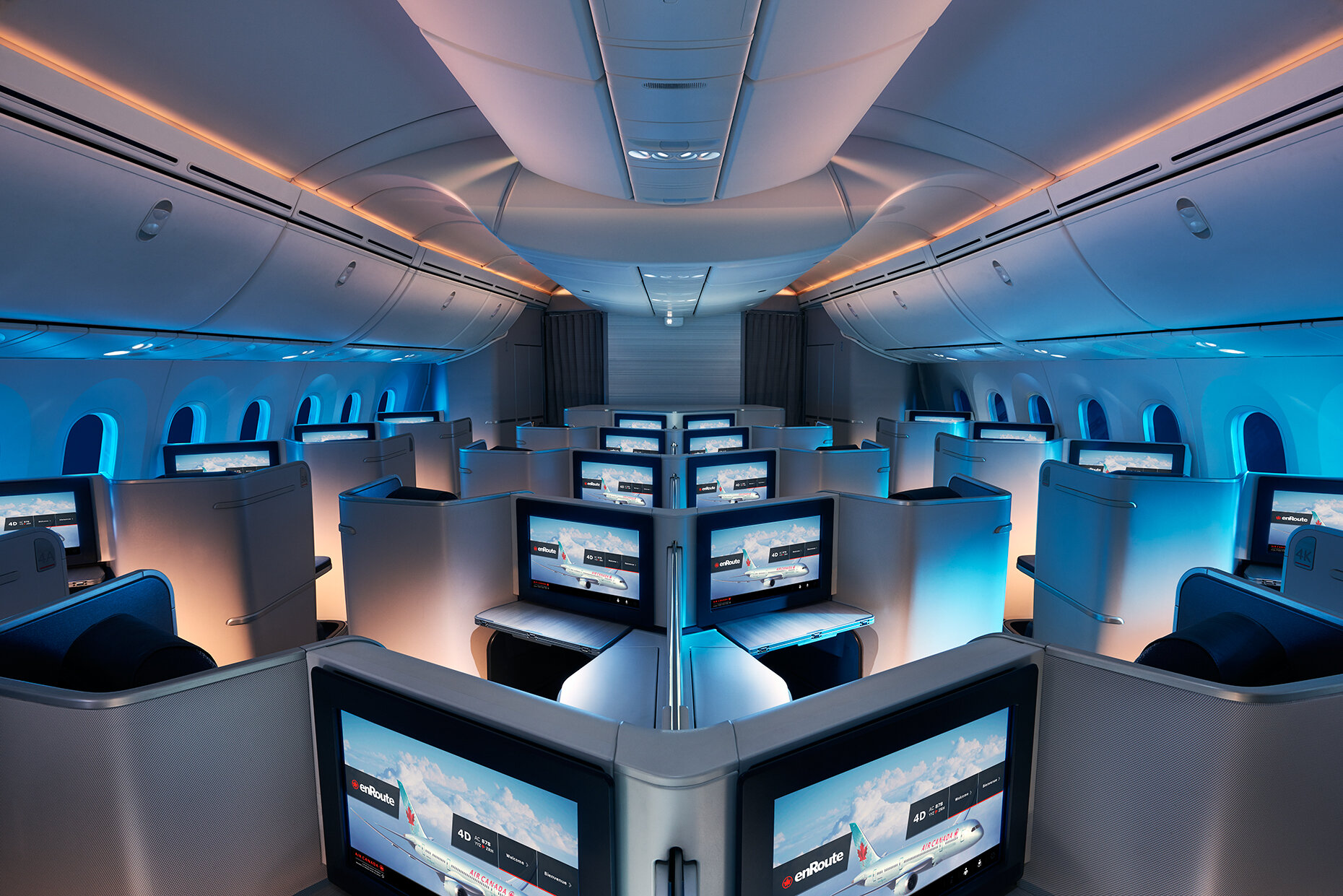
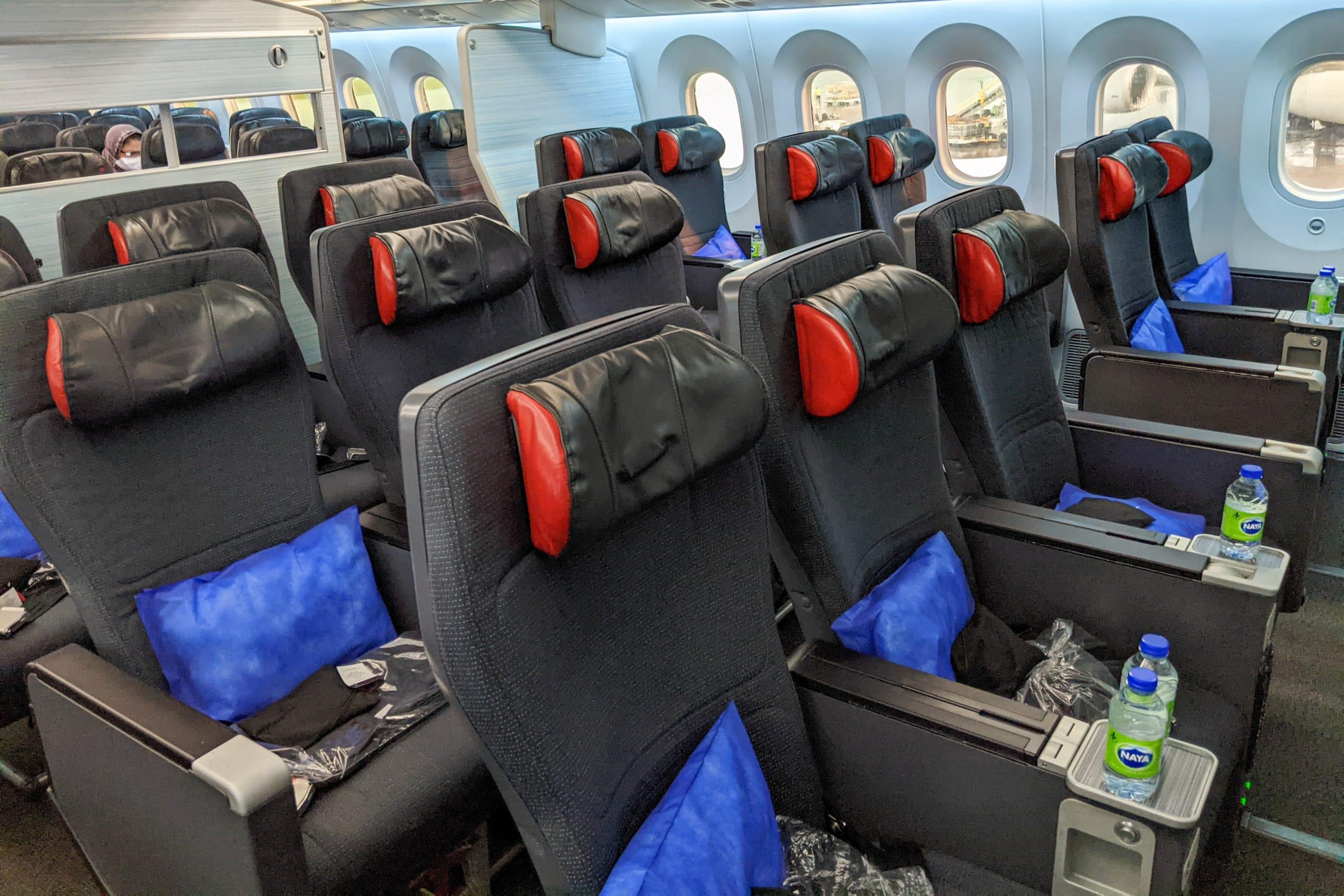



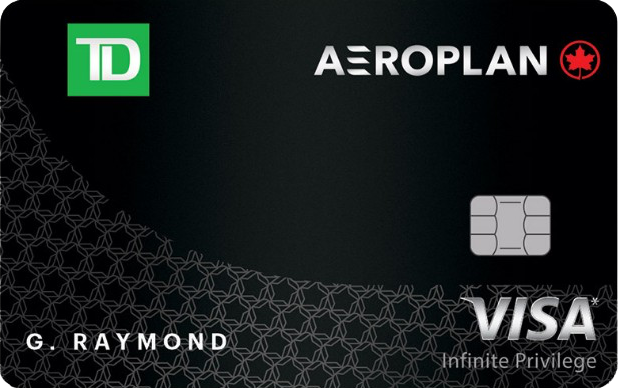


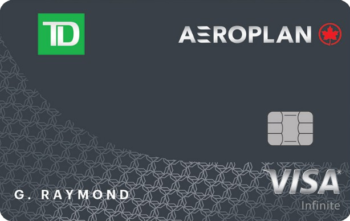






I booked a Flex fare with AC but some of the segments were on a United plane. The AC segment subsequently got cancelled and I was put on a United plane.
The portion that got cancelled I received no SQD and I received less than 100% of the mileage flown for SQM
Is this possible?
T.J.
Based on your above example, standard fare is $350, no refund and change for a fee.
How about to cancel the ticket? Would Air Canada give me some credit back instead of losing the total $350?
Happy 2024!
Hi,
When you cancel a non-refundable ticket, the ticket’s cost will be lost entirely